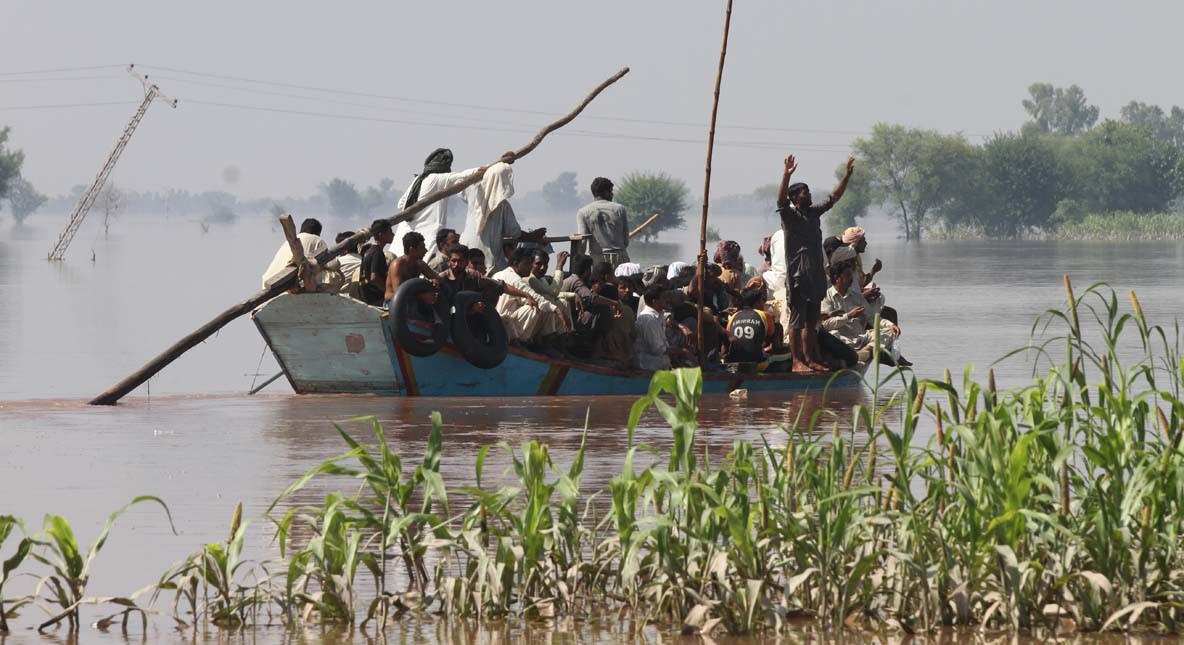
There is a very clear and direct connection between climate change and our agriculture and textile industry that must be looked into

Pakistan is one of the countries which are extremely vulnerable to climate change. That is partly due to lack of resources to respond to climate change. It’s becoming a great challenge for Pakistan not only for environment issues but for social and economic development as well.
Due to the effects of climate change, Pakistan has seen a number of catastrophic episodes during the past few years, including drought in 2000, heavy rainfall in 2001, glacier melting in 2008, and floods in 2010-12. The intensity of these events, which are increasing overtime, is leaving millions of people at risk.
The changes in environment in Pakistan is making significant impacts on major sectors of Pakistan economy, including industry, agriculture, fisheries, biodiversity, community health, tourism, business, forests, transport and public services, etc.
The agriculture sector in Pakistan is highly vulnerable to climate change and it has been badly affected during the past 3-4 years. Among all crops, the cotton crop is the major crop damaged by floods.
Pakistan is the 4th largest grower of cotton after the US, China, and India and 3rd largest consumer of cotton. According to the Economic Survey of Pakistan 2013-14, cotton has a share of 1.4 per cent in GDP and 6.7 per cent in agriculture value addition. It is an important source of raw material to the textile industry.
The economic activities in Pakistan are influenced significantly by the textile sector as the sector directly contributes to the domestic production, financial services, and foreign exchange earnings, accounting to 8 per cent of GDP.
Cotton is the lifeline of the textile market of Pakistan. Let’s now see the vulnerabilities of cotton crop and the textile industry of Pakistan to climate change.
There are various factors which are responsible of fall in cotton yield during the past few years in Pakistan. The cotton production has decreased due to the rise in temperature, floods, unpredictable rainfall pattern, etc.
Textile sector of Pakistan is entirely dependent on the raw materials of cotton crops and the textile industry of Pakistan was suffered due to the back to back floods 2010-12.
The Economic Survey of Pakistan 2010-11 states that the prices of cotton started increasing sharply from October 2010 (PKR 7,150 per maund) and touched a 150-year record level in March 2011 (PKR 12,500 per maund) on the back of both supply and demand factors. The 2010-12 floods made a substantial negative effect on the economy of Pakistan with lasting long term impact.
Due to a decrease in cotton production the textile industries of the country had to rely on the import of cotton. Around 2 million bales of cotton were destroyed by floods, leaving the businessmen to bear the burden of higher price of imported cotton. This also increased the overall import bill of Pakistan during 2010-2012.
Climate change is affecting not only the textile sector’s productivity but also making effects on Pakistan economy in importing and exporting textile goods in order to maintain a reasonable balance of trade.
There are no proper studies available on impacts of climate change on textile markets in Pakistan. Particularly, one can’t have data on the impacts of climate change on lower, middle and upper level farmers of cotton crops which are affecting from climate change.
Studies are also not available on the adaptive capacity of these farmers regarding their response to climate change. Adding to this, no proper research is available that discusses the vulnerabilities of climate change to cotton, yarn, and textile markets of the country.
The lower and middle level producers/exporters of textile products are also being affected by climate change. The question that is yet to be answered is whether these producers/exporters have the capacity to import raw cotton in order to complete their export orders?
The livelihood of a huge population of the country is associated with the textile sector and again no proper evidence or research is available on how many livelihoods (of daily wage workers) are associated with the textile sector due to climate change.
There is a large chunk of female cotton pickers associated with cotton picking and also a large number of females are associated with the manufacturing of textile products, so it should be also seen to what extent these females are affected.
There is a need to improve the adaptive capacity of institutions working for the mitigation of climate change. The government seriously needs to address the highlighted issues above.